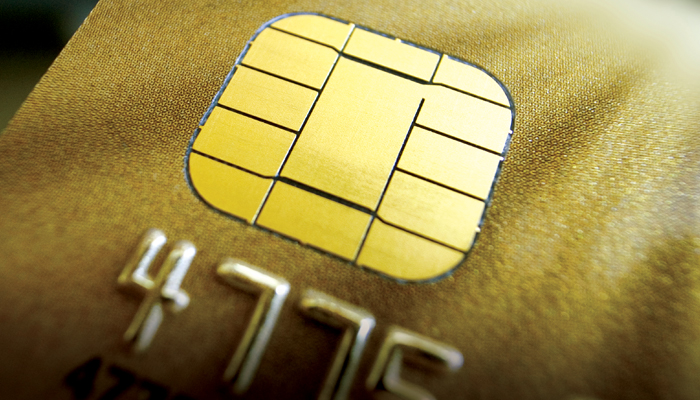All
Preparing for EMV ‘Smart’ Credit Cards
by John MacKenna

Energy marketers come to terms with new rules regarding liability
Important changes are happening in the world of credit card processing that are causing many merchants to upgrade point-of-sale equipment, but most transactions for fuel delivery will be unaffected, according to an expert at AVATAS Payment Solutions.
Harry Hargens, Vice President of Business Development at AVATAS, said in a recent interview that many stores are preparing to process transactions using a new type of credit card that carries an embedded computer chip. Many energy marketers can continue business as usual with older cards, however, because the new card technology does not affect the card-not-present transactions that are ubiquitous in fuel sales.
The new cards carry so-called “EMV chips.” EMV stands for EuroPay, MasterCard and Visa, which is the predominant card technology in most of the developed world, according to Hargens. “The United States is the last country with paved roads that does not require EMV cards,” he said. “The United States is migrating to EMV more to become compatible with the rest of the world than for security, since EMV by itself is not a complete security solution.”
Onboard Microprocessor
EMV chips are designed to combat fraud in credit card transactions by preventing the use of counterfeit and stolen cards, according to Hargens. When a customer uses a card with an EMV chip at a sales terminal, the onboard microprocessor creates a unique, one-time authentication cryptogram for the transaction, which the terminal transmits to the card-holding bank. Because the cryptogram is unique to each transaction, EMV prevents the use of counterfeit cards, because they would not be able to generate the correct cryptogram. By contrast, traditional magnetic stripe cards do not generate a unique code for the transaction and instead just transmit the card number, which can be stolen by a data thief and used to create a fake magnetic stripe credit card.
There is a widely held misconception that cards with EMV chips will be impervious to all fraud, but that is untrue, according to the AVATAS executive. The EMV chip creates encrypted data when used with an EMV-enabled terminal, but a card with an EMV chip can still be stolen and reused, or it can be used for online purchases and card-not-present purchases, he said. Also, even EMV transactions still transmit the credit card number, which must still be protected from theft to prevent their use in online fraud and counterfeit magnetic stripe cards. Industry standard point-to-point encryption (P2PE) and tokenization methods to protect against data breaches remain vital to prevent theft of credit card information by hackers, and merchants must be sure to have those protections in place.
The EMV-chip technology will not come into play in most fuel delivery transactions because those are conducted as recurring billing or by phone, using a credit card number that is either or file on is dictated by the customer. EMV chips only generate unique data when used at the point of sale with an EMV-enabled terminal, according to Hargens.
The petroleum industry will also benefit from a longer transition period for point-of-sale terminals mounted on gas pumps at filling stations, the AVATAS executive explained. Due to the cost and complexity of the card-reading systems on gas pumps, the credit card industry is giving station owners an extra two years, until October 2017, to update equipment before becoming liable for fraudulent transactions on those devices.
Shift in Liability
There is currently a rush on among U.S. merchants to deploy EMV technology in stores, because there will be a shift in legal liability for certain types of credit card fraud later this year. As of October 1, 2015, brick-and-mortar merchants who are not equipped to conduct EMV transactions will be liable for fraudulent sales that occur with EMV cards at their establishments. Currently, the credit card companies are liable for fraud at the point of sale.
The embedded chip is not the only change that EMV technology introduces; there are also new terminals that handle cards differently. Instead of the swiping action that customers use with magnetic stripe cards, the EMV chip card is inserted into a slot in the terminal where it remains for a few seconds while the transaction is processed.
The change could be a little disconcerting for customers until they get used to it, according to Hargens. Rather than simply swiping the card and then returning it to their wallet or purse, the customer will have to wait for the clerk to ring up the sale, then insert their card in a card reader slot, and then leave it there until the card and the terminal finish their electronic communication. “Consumers will be confused for a while,” he said. “Some will say it adds time to the transaction because their card is out of their wallet for longer, but it is really just a different flow and perception.”
Not all EMV-chip cards will be created equal, the AVATAS executive pointed out. Some will use a combination of chip and signature to verify transactions, while others will use the chip and a PIN. Businesses should plan on helping clerks and customers learn how to navigate all the different possibilities, he said.
While the card-not-present transactions that many fuel dealers use are unaffected, companies with retail operations such as convenience stores are directly affected. They will need new card readers to handle the EMV-chip cards, and they might also need new software or software updates to keep their transaction data flowing smoothly, according to Hargens.
Next Up: ‘Contactless’ Cards
The chip-enabled cards carry their own microprocessor and cost a bank $2 to $3 to create, compared to about 50 cents for a mag stripe card. The new cards can also be created with Near Field Communication (NFC) wireless technology, which enables them to make “contactless” transactions by placing the NFC card within a few inches of a NFC-capable terminal. That technology is used with Apple Pay, Android Pay and similar “mobile wallet” systems that also can use a smartphone in lieu of a credit card. “I don’t expect U.S. banks to make cards with both technologies, but I think we are slowly marching down a road where more and more terminals are NFC-capable, driven by mobile wallets,” Hargens said.
A recent survey of 504 small business owners by Intuit showed that only 42 percent are committed to accepting EMV payments and only 19 percent are aware of the shift in liability for fraud.
AVATAS stands ready to help merchants navigate the transition by providing EMV-capable hardware, processing and guidance, according to Vice President Marci Gagnon. New point-of-sale equipment can cost anywhere from $150 to $400 per terminal, depending on the type of equipment purchased and the quantity of units. For more information, e-mail AVATAS at info@avataspayments.com.
Related Posts
 Are Tight Supplies and High Prices in Store for the Winter?
Are Tight Supplies and High Prices in Store for the Winter?
Posted on September 18, 2025
 Weather or Not? Hedging Against Warm Winters Using Weather Derivatives
Weather or Not? Hedging Against Warm Winters Using Weather Derivatives
Posted on August 18, 2025
 2025 Hedging Survey
2025 Hedging Survey
Posted on April 29, 2025
 Trump Policies and Energy Markets
Trump Policies and Energy Markets
Posted on April 28, 2025
Enter your email to receive important news and article updates.
